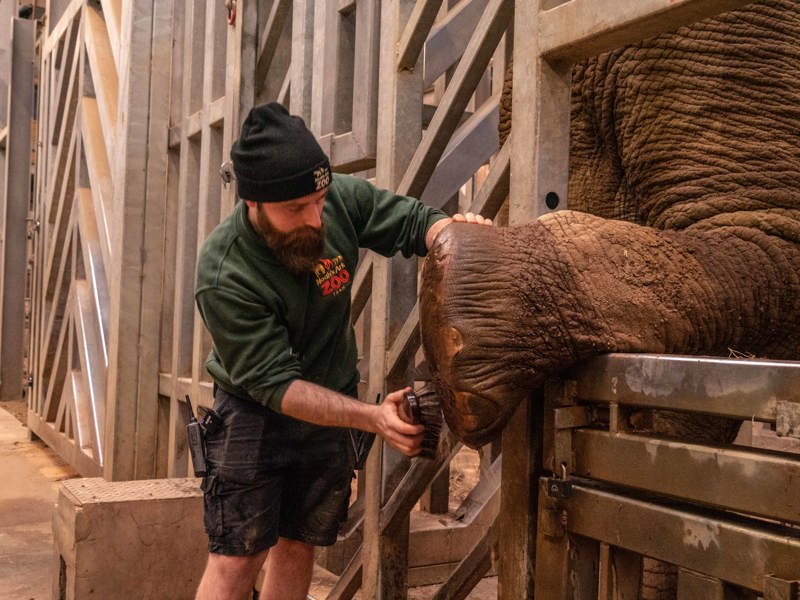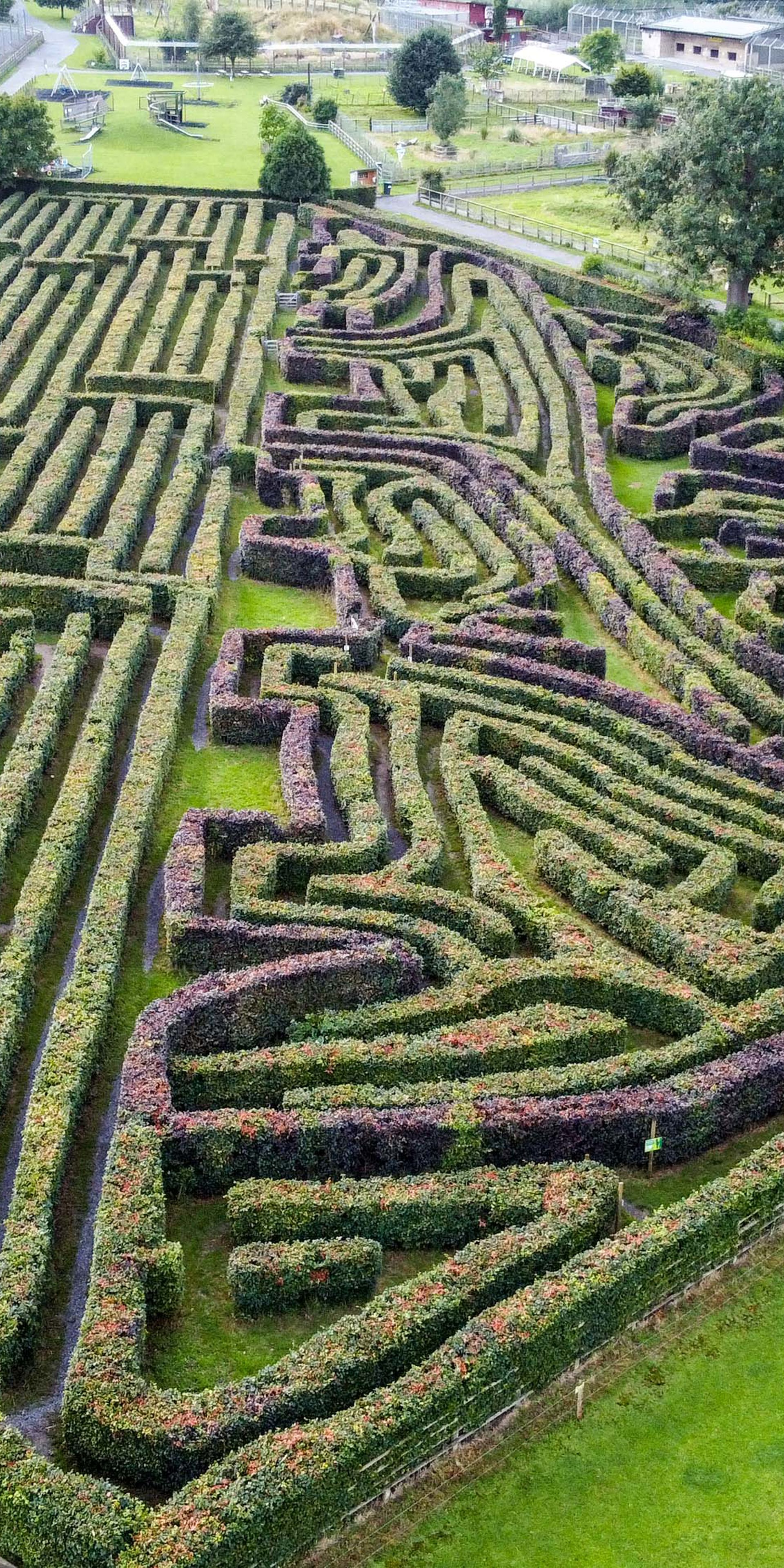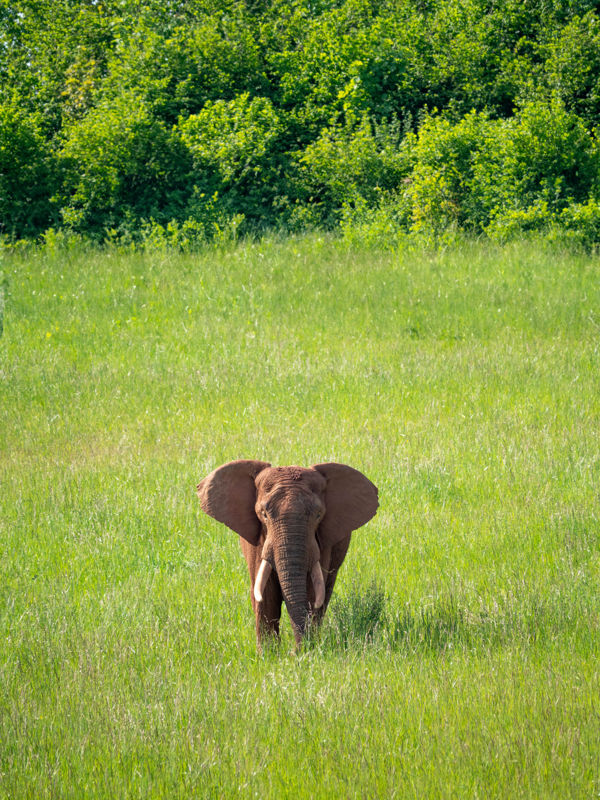World Elephant Day 2022
28th Nov 2022
A six-foot-long nose. One of the strongest creatures on the planet. A revered symbol of good luck and wisdom. The world’s largest land mammal. Yes, that’s right, we are talking about elephants! On Friday 12 August it is World Elephant Day – a hugely important occasion to celebrate these striking animals, as well as a valuable opportunity to raise awareness of the critical threats to their existence.
Because of their grand, magnificent bodies, their association with peace and empathy, as well as their cultural icon status, elephants frequently manage to rank as one of humankind’s favourite animals. However, they also are classed as endangered on the IUCN’s Red List. The facts about the threats to elephants are alarming; around 90% of African elephants have been wiped out in the past century, mostly due to poaching for the illegal ivory trade, whilst Asian elephants have suffered habitat loss resulting from human-elephant conflict. Today, there are only around 40 – 50,000 left in the wild. It is critical to protect and conserve elephants as they play a significant role in their ecosystems and are tied to rich biodiversity.
On 6th June 2022, the Ivory Act came into force in the UK to help protect these spectacular creatures. The Ivory Act bans the dealing of (buying, selling, hiring, exporting, and importing) items made from or containing elephant ivory, regardless of age. The aim of the act is to cut off the market for domestic ivory and reduce poaching. Crucially, it is not illegal to own an item containing elephant ivory, but as soon as someone tries to sell it, they would be breaking the law.
Here at Noah’s Ark, we care passionately about the plight of elephants and are doing as much as we can to help them. We are currently working with the social enterprise Elephant Parade® who raise awareness for the importance of elephant conservation through their stunning hand-decorated elephant sculptures. We have a trail of 26 of their sculptures around the zoo this summer for visitors to see, as well as to learn more about Elephant Parade’s mission. So far, in 2022, we have raised over £11,000 for conservation charities which support wild Elephants as part of the Parade!
We have also raised funds and awareness for several other elephant conservation charities, and our resident African bull elephants are part of the European Endangered Species Breeding Programme (EEP) which aims to breed and conserve the species most at risk of extinction in the wild.
In addition to supporting conservation work, Noah’s Ark opened a 5,000 square metre willow plantation inside the Elephant Eden enclosure for our elephants to explore and graze from. This is the first of its kind for a UK zoo and builds upon our track-record of having the largest elephant enclosure in the UK and all northern Europe.
To learn more about the elephants that reside here, we had a chat with Tom the Head Elephant Keeper about them and his role as their keeper.

What elephants do we have at Noah’s Ark Zoo Farm?
Currently we have two African bull elephants at Noah’s Ark: Shaka, our dominant bull elephant who is 30 years old, and Janu, our younger male elephant who recently turned 17 years old.
Personality-wise, Shaka is very people-orientated, lively and responsive. Janu is much more independent and likes to spend time alone grazing!
How big are Shaka and Janu?
At present, Shaka weighs 4506kg and measures as 9ft2, and Janu weighs 4222kg and is 9ft1 tall.
We weigh them every day on outdoor scales, and we measure their height every few months next to a fence with measurements on. Shaka is the longer elephant from trunk to tail and also has bigger tusks and a bigger head. However, if you put them side by side you probably wouldn’t see much difference!
African male elephants grow throughout most of their life – until they are in their forties or fifties. The full potential of a bull elephant is between 6000kg and 7000kg. They are the largest land mammal on the planet!
How often do they eat?
They eat and graze throughout the day, but we only prepare one meal per day which is usually served for their breakfast. This meal is made up from wheat bran; supplements; a gut balancer; special elephant pellets that comprise essential vitamins, minerals and nutrients; linseed to prevent colic; and foods to act as faecal markers (corn and wheat) so that we can separate and check their poo when we need to! All of this is mixed with hot water to make it more palatable and then served on top of a bucket of hay to bulk it out. They eat a lot of hay throughout the day, and as much ‘browse’ (tree branches and grass) as they can eat, which they have 24/7 access to.
When do they sleep?
They sleep at night and rarely during the day. If they were to sleep during the day, it would just be a little doze. They sleep between two and six hours a night, but this isn’t all in one go; they will sleep for two hours maximum and then walk around for a bit. They alternate which side of their bodies they sleep on in order not to put too much pressure and strain on any one side. They sleep in their sand beds indoors, back-to-back! However, they have access to their outdoor spaces during the night too if they want to walk around outside. The only time we have shut them in was during the ‘Beast from the East’ storm to protect them from those harsh weather conditions.
Can you tell us some more about the conservation charities we have worked with, and our partnership with the European Endangered Species Programme?
We have worked with and raised money for a variety of conservation charities over time, including Elephants and Bees, Space for Giants, Elephant Care Unchained, World Land Trust, TUSK and Elephant Parade.
Our elephants are also part of the European Endangered Species Programme (EEP). Our elephant facility has been set up to host bull elephants; this is to assist the EEP achieve its overall goal of creating sustainable genetic populations of these species across European zoos. As it is often not possible to house several breeding males in the same facility, our facility at Noah’s Ark acts as a place for young male elephants to stay, develop and mature until they are old enough to become breeding elephants at other zoos in Europe.
What else is there to know about the elephant facility here? What makes it special?
Our elephant facility is called ‘Elephant Eden’, and at 20 acres in size it is by far the biggest in the UK, Northern Europe, and one of the largest in all of Europe. We finished building this state-of-the-art enclosure in 2013, and zoos that have built facilities since then have used ours as the blueprint for their own.
Some of its impressive features include the deep sand floors (1.2 metres deep) which acts to protect the elephants’ feet, joints and toenails – hard surfaces under foot would cause huge strain on their bodies as well increase the risk of arthritis and infections. The sand is also much more comfortable to lie down and sleep on, as well as mirroring the materials and conditions that elephants would have in the wild.
We also have sprinklers inside their house which keeps them cool, and we can adjust the temperature according to their needs. Additionally, the facility has hoists that we can put toys and food in, and then manually control to move up and down for them throughout the day and night.
We recently opened a home-grown willow plantation for the elephants inside their enclosure – can you tell us some more about it and how the Shaka and Janu are finding it?
We opened the elephants’ willow plantation back in June after a decade of forest management and planning. It measures 5,000 sqm in size and is the first of its kind in the UK – it is an enormous milestone for us, and zoos in general. This verdant section of the enclosure is home to willow, aspen, and poplar as well as other delicious elephant-friendly snacks! When they have access to it, Janu and Shaka are enjoying spending most of their days up there; it’s new and exciting for them and they love to explore and graze in it for many hours at a time.
How do they stay cool in the hot weather?
As Janu and Shaka are African elephants, they have huge ears which are designed to regulate their own temperature which they do by flapping to fan themselves.
There is also a pond in the outdoor section of their enclosure, but they prefer to use the mud wallows to keep cool! The mud wallows are dotted about their fields, and we keep this wet and topped up for them with mineral clay. They like to roll around in them, or splash themselves with the mud, which acts simultaneously as sunblock and exfoliant for their skin.
What does a day in the life of an elephant keeper look like?
We start the day just before 8am and chat as a team to think through what needs to be sorted out. We then feed them and let them eat whilst we clean their outdoor area and prepare it for the day (hang up new toys and hay). We then come back in the house and do some training with them – husbandry routines, as well as some health and medical checks. We then let them outside and they usually stay out for most of the day, whilst we clean their indoor areas. We also do things like paperwork, checking their CCTV, chopping up 50kg of vegetables each day (a lot of carrots, and other root vegetables!) to go inside their toys and scatter feeds. We then make up hay nets and hang them up around their enclosure and prepare their enrichment for the next day. You spend a lot of time preparing for the next day!
What is your favourite thing about being an elephant keeper?
My favourite thing is getting to spend so much time with the elephants and building a bond with them. It is so rewarding seeing them grow and develop!

Sign Up to the newsletter
Would you like to receive marketing emails from us? Please tick the box if you would like to receive information about future events, ways you can support our charity, offers and discounts.

